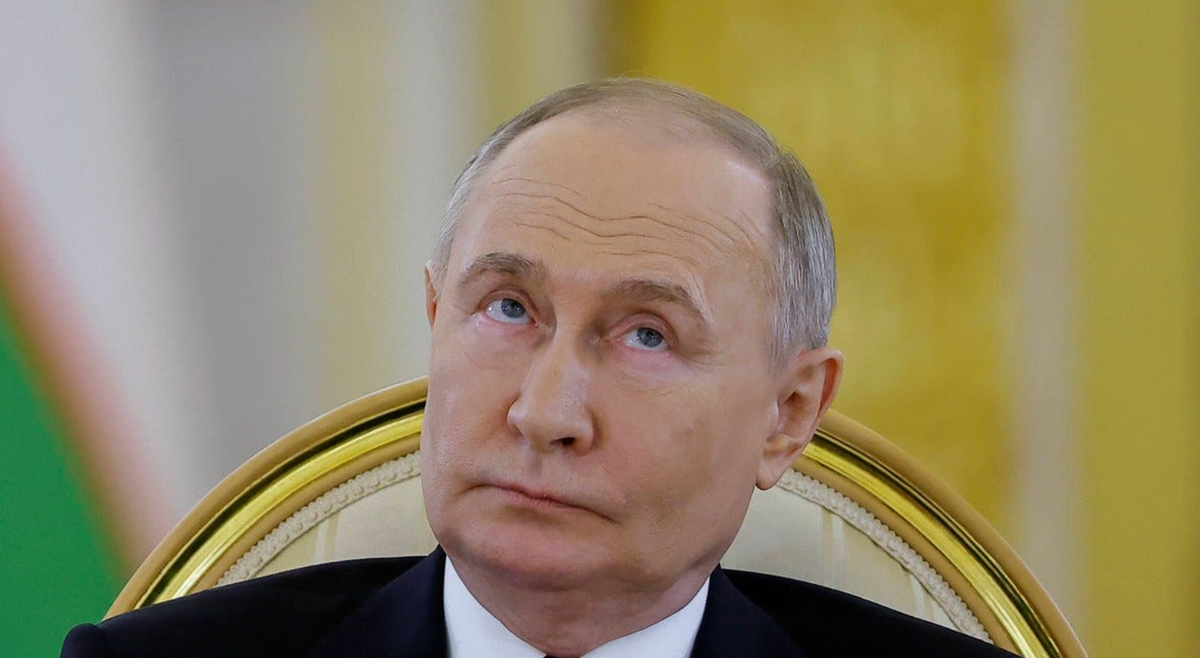Musing on Europe. Source: Newsweek
It’s been almost 2 weeks since Russian drones went into Poland. Since then we also learned that:
- Russian ARMED jets went into Estonian airspace.
- Russian ARMED jets went over Polish offshore drilling site.
- The US announced (in late August, but made public just a couple of days ago) that it will significantly decrease military aid to the Baltic states.
- Several European airports experienced a cyberattack.
As I mentioned in my previous article, whether you like it or not, we are bound to see more Russian incursions / provocations.
Intro
Today I will go over Russian provocations in more detail. Two weeks ago I did a fast piece to capture the current moment. But as anything in geopolitics, actions have long-term motive and consequences. What are they?
And even more importantly, why now? That’s a fair question to ask. Between packing my clothes and fighting with bureaucracy I asked it myself.
Well, I think it’s time. The war has been dragging on for almost 4 years now. It’s high time to push forward and end it. You could fight a war for years, but while Russia is busy in Ukraine, opportunities fly by it all around. And the societal cost of that + all the death would be enormous.
However, Russia is not willing to compromise. Putin thinks he is winning the war. At the same time, the progress of the Russian forces is painfully slow.
State Of The War
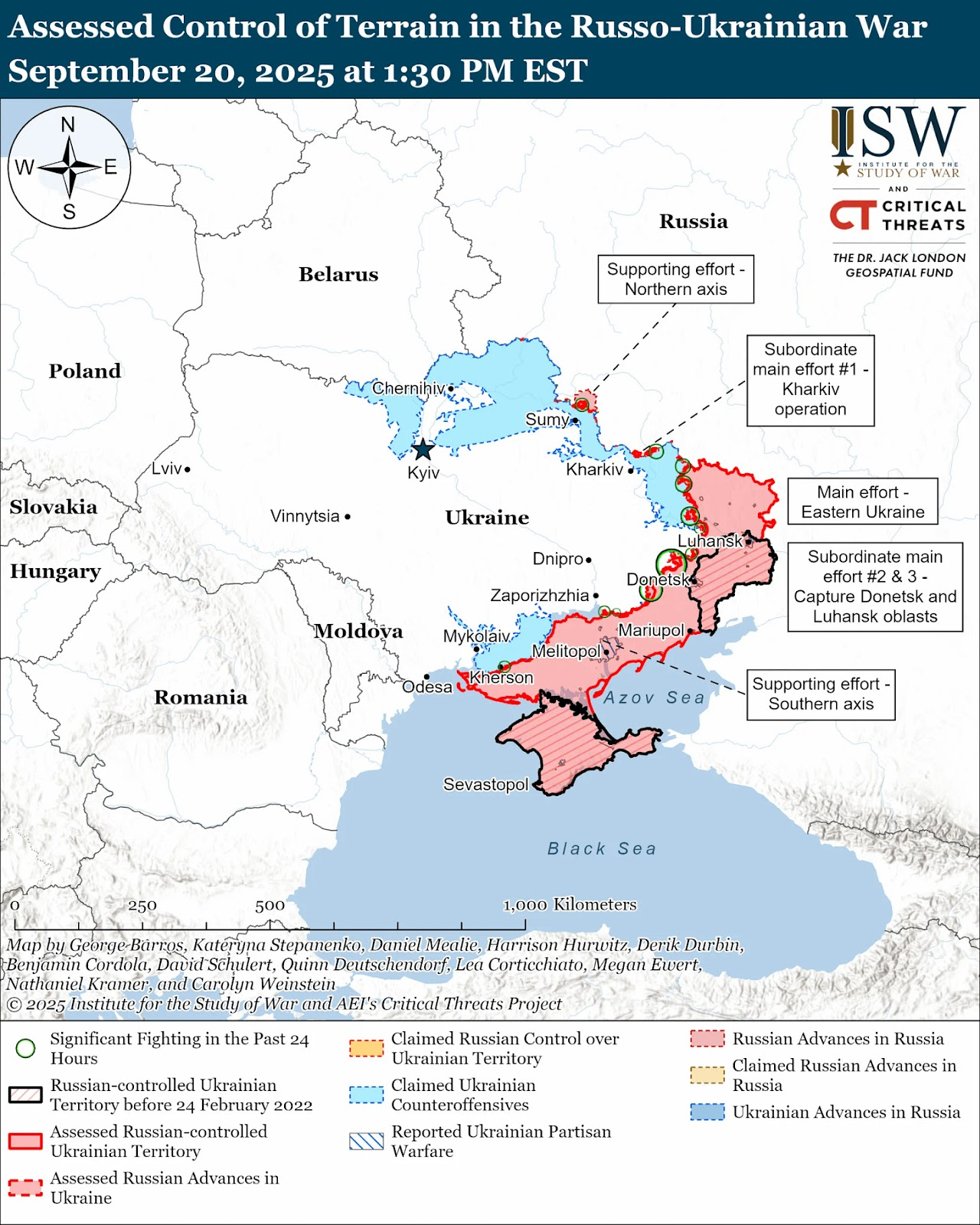
Russia has now close to 700,000 troops directly engaged on the frontlines. And this map didn’t really change much since 2024. In fact it didn’t change much since 2023. The pace is snail-like and I doubt that even 100,000 additional soldiers could change that - group them together and they become an easy target; split them evenly across the frontline and they make little difference - it’s only a 14% increase in a war with a massive amount of casualties.
This is a war of attrition. Russia thinks it can outlast Ukraine and Europe and its actions are calibrated to inflict maximum overall pain vs push the frontline. The war efforts are spread across whole Ukraine - daily drone and missile strikes don’t focus on the frontline. They target the whole country.
The frontline itself is a meatgrinder - both sides are losing huge amount of soldiers on a daily basis, with Russia having enormous population advantage, especially considering how many Ukrainians live abroad. There is no denying that Ukraine is decimated, starts to be tired of war and is severely destroyed infrastructure-wise.
The article I did before the Alaska summit already showed that Ukraine is only afloat thanks to European and US aid. So If Russia really wants to push this war to an end on its demands it only has a few options:
- Second front in Ukraine from Belarus - aim would be to squeeze Ukrainian forces from both sides.
- Weakening support for war in Europe through influencing elections to decrease the amount of aid given.
- Quickly taking over Moldova to put pressure on Odessa - essentially scenario one, but a different front.
- Put pressure on Easter Poland and eastern Romania to slow the transport of aid.
First option is rather unlikely as it would require a sustained effort. After 2022, the northern border with Belarus is heavily fortified. There is high risk that a new offensive there would quickly halt to resemble to main frontline meatgrinder. You could argue for it, however there is another option with significantly better outlook.
Second option is already happening, but its effects are spread over time. It’s effective in slowing the pace of new aid and eventually in completely destroying the support for war, but the timeline for this to happen is the next 3-4 years. That’s way too long for Russia and there is no certainty it will happen.
Third option is already lost. Europe did one smart thing and really invested in Moldova’s elections to solidify European influence over the country. Sure, Russia still has Transnistria, but it’s not enough to safely open a second front. Also the troop movement to Moldova would be extremely difficult (and completely transparent to everyone around).
And lastly, we have the fourth option.
How Russia Wants To End The War?
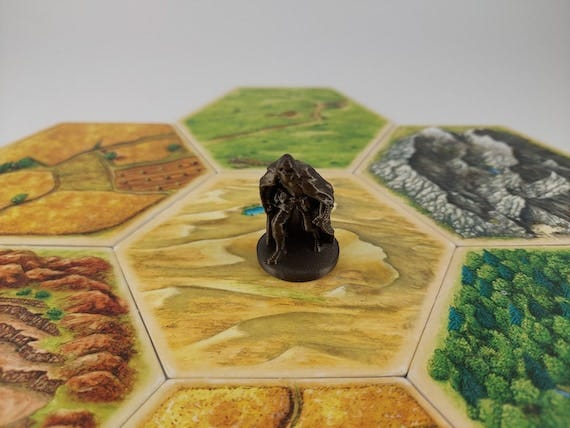
Have you ever played the Settlers of Catan? It’s an interesting strategy board game in which you compete against other players, trying to produce more resources to build roads and settlements. Interesting, because there are no armies. Players compete by building.
The only mean to limit other player’s ability to grow is to block their supply - either through building roads and settlements first or through a robber mechanism that blocks supply extraction from a given space.
You may ask why do I talk about some stupid board game. Well, because outside of direct military confrontation, what you can do to hinder your opponent’s moves is to target their supply chain. And that’s exactly what Russia aims to do.
The Basics
At the minimum Russia will aim to disrupt the aid coming to Ukraine. The central hub for this aid is in the south-eastern Poland, near a city named Rzeszów - exactly where most of the drone incursions took place.
As there is a no-fly zone over Ukraine, over 90% of aid that goes to Ukraine is transported there, only to be later delivered by cars of trains. Warehouses near Rzeszów are crucial for continued support of Ukraine.
What Russia can do here is simple - regular drone incursions, occasional rogue missile falling on the warehouse (or near it). All the hybrid actions that allow for ambiguity and yet make NATO uncomfortable holding equipment there.
You can add to it all kinds of sabotage. From cyberattacks to destroying railways leading to Ukraine. All aiming to disrupt aid logistics, not only in Poland, but throughout whole Europe.
The incidents that we see currently are done to test NATO reaction. To see what will be the response. Thus lack of one emboldens Russia.
However there is a drawback to this basic approach - there is not much else Russia can do without major escalation. And it might not be enough. To quickly tip the scales, Russia needs to stop or severely limit the flow of aid.
What Russia really needs is a gambit.
The Gambit
But PROPHET, western media tell me that Russia is weak and close to collapse, how can it have enough resources for a gambit?
Well, western media also tell you that if Russia wins in Ukraine it will go forward and take Poland and the Baltics. And they aren’t entirely wrong.
Currently Russia has anything between 120,000 to 200,000 soldiers in reserves, ready to go to war. For quite some time now Russia has been recruiting more soldiers than it needs on the front. Additionally Ukraine was awaiting an offensive near Sumy that never happened - 50,000 Russian soldiers were supposed to be dropped there.
As I mentioned before, spread across the front they won’t make that much of a difference, considering weekly losses. Grouped together in one place near the front they become an easy target.
However it is a force strong enough to open an entirely new front. Remember that Ukraine war started with 100,000 troops. In my opinion Russia is currently preparing for a new invasion, targeting either the Baltics or Suwałki Gap. Why not a second front in Belarus?
Suwałki Gap has way more upside as it is not heavily fortified yet and creates a difficult dilemma for NATO.
Casus Beli
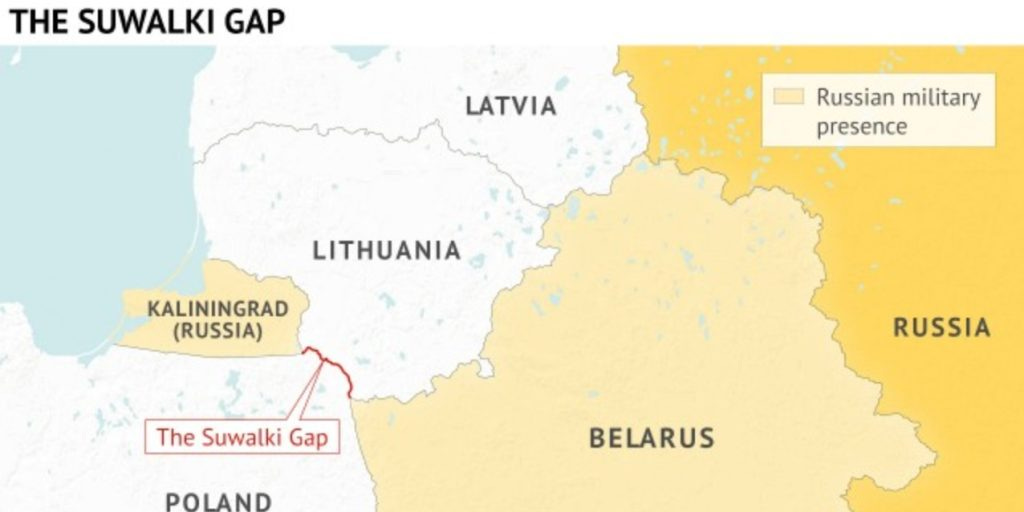
Suwałki Gap is one of the most important weak points on NATO territory. Connecting Kaliningrad to Belarus (and linking the Baltics to the rest of Europe), it has long been considered a danger. On the outskirts of NATO, it’s not only at risk, but also hard to defend.
And now Russia has the perfect casus beli to target it. After the drone incursion into Poland, the Polish government has completely and indefinitely closed the border with Belarus. It has done so despite just opening a transit route there that connected China with Europe by rail.
With no transit coming through, not only China and Belarus have a problem, but also Russia that has lost most of its land access to Kaliningrad (infrastructure is rather on the Polish side of the gap). It is hardly outlandish to think that Russia may want to invade this small strip citing threat to national integrity or something similar.
So as enablers we can list:
- Belarus blockade.
- 120,000 to 200,000 spare soldiers ready to be deployed.
- Large quantity of missiles in Kaliningrad that would enable Russia to effectively threaten NATO and defend the gap.
But let’s take a step back and consider some limitations:
- Russia would look to invade just the gap and won’t look to move further into either Baltics or Poland. It will be a small and targeted operation in order to avoid a wider war with NATO.
- Russia wouldn’t really aim to hold the gap for a long time. It should be completely fine with losing it eventually, as long as it allows Russia to achieve its strategic goals in Ukraine.
In effect, Russia’s plan would be to take the gap relatively quickly using its spare troops and large quantities of equipment in Kaliningrad. Then it would aim to receive a limited response from NATO.
Russia currently tests if NATO is ready to retaliate for provocations of various sorts. And it seems that while NATO is ready to defend itself, it is not ready to directly attack Russia. In this calculus, Russia would believe that NATO response would be limited to the defense of the gap and won’t involve direct attacks on Russian territory (eg. strikes on Moscow).
Consequences
Europe
NATO will be faced with a choice. With US providing minimal support (as it continues to indicate), Europe will need to take the matter in its own hands. With military equipment reserves depleted it will need to make a choice - continue to help Ukraine and potentially fail to defend NATO territory or help Lithuania / Poland and in effect reduce the flow of aid to Ukraine. Ukraine without the equipment would crumble fast.
Additionally with societal tensions that we currently experience in Europe, there is high potential for all kinds of protests and disagreements between the countries.
However, there is a fairly small window to achieve exactly this result for Russia:
- Europe is trying to rebuild its military industrial capacity, leaving maximum of 2 years after which Europe will start to have more equipment reserves.
- Trump-Europe relations are currently weak and Trump is planning to focus on other regions militarily - we can expect it to happen for the next 3 yers, however a surprise in Ukraine war could alter the calculus somewhere down the line.
- Suwałki gap is currently understaffed with reinforcements to Baltic coming only next year.
- Poland and Lithuania are working to fortify the border with Kaliningrad, but they have only just started.
- Russia’s large reserve force is a cost - 120,000-200,000 soldiers need to be fed and stationed and they can’t be kept in reserve forever. Especially since Ukraine war is troop-intensive.
Russia
It’s not all fun and games for Russia once it goes down this path. The main risk for it is European nations deciding to close the Baltic Sea for Russian ships. Then Russia would need to rely solely on Arctic harbors as the Black Sea is already dangerous.
Europe could also impose way harsher sanctions on Russia or finally decide to impose tariffs on China as Trump wants.
Ultimately this is a high risk / high reward option for Russia. I have little doubt we will see a lot of “the basics” aiming to disrupt the flow of aid and looking to divide European societies.
However I also believe that there is a higher than currently forecasted chance of a gambit. After 4 years of war, we all got used to it and it makes it easy to believe that it will look the same in the future. But why would it remain the same? It’s war - expect the unexpected.
I’m not saying that it is certain - I’m saying that it is possible, even probable as there is clear upside.
Prediction Markets
We have several markets worth looking at and a few more that I proposed and hope to see soon. First up:
With still a week till the end of the month and repeated incidents around Europe (last night we had more strange drone incidents, eg. over Oslo airport) fair value from my point of view is around 25-30c for both. I allocated a small share of my bankroll towards these markets, reserving higher share for longer-dated markets.
Additionally I proposed these markets with timeline till the end of the year.
Next up:
I have a ca. $100 Yes position on this market, however it is a long-shot now. Two weeks ago at 4.4c it was value, now it’s more of a gamble. However such market with the timeline for the end of the year is in the works and anything below 35-40c on Yes should be value then.
Lastly:
I’d much rather have a market for 2026, but this one is also ok and I have a $100 position on Yes on this market as well. Once winter weather sets in ie. in December, the gap is available to invade. However there is a higher chance we will see the invasion in the beginning of 2026 or even towards the end of 1H2026 depending on how the situation evolves. That being said 5c is relatively cheap - it’s priced like a bond for something that has a chance of happening.
People tend to discount such markets due to article 5 of NATO. However, they do not realize how it will work. The US won’t unleash all its might to recapture a small strip of land somewhere in the Baltics. It will give some weapons or some planes, rest of NATO will assist in defense of it, but no one should realistically expect an all-out war with Russia.
Thus, I believe that a fair price for this market is up to 15c, while the fair price for the coming (sooner or later) 2026 market should be around 40c.
Ultimately you see these trending down for a reason - whatever happens we are far from over:
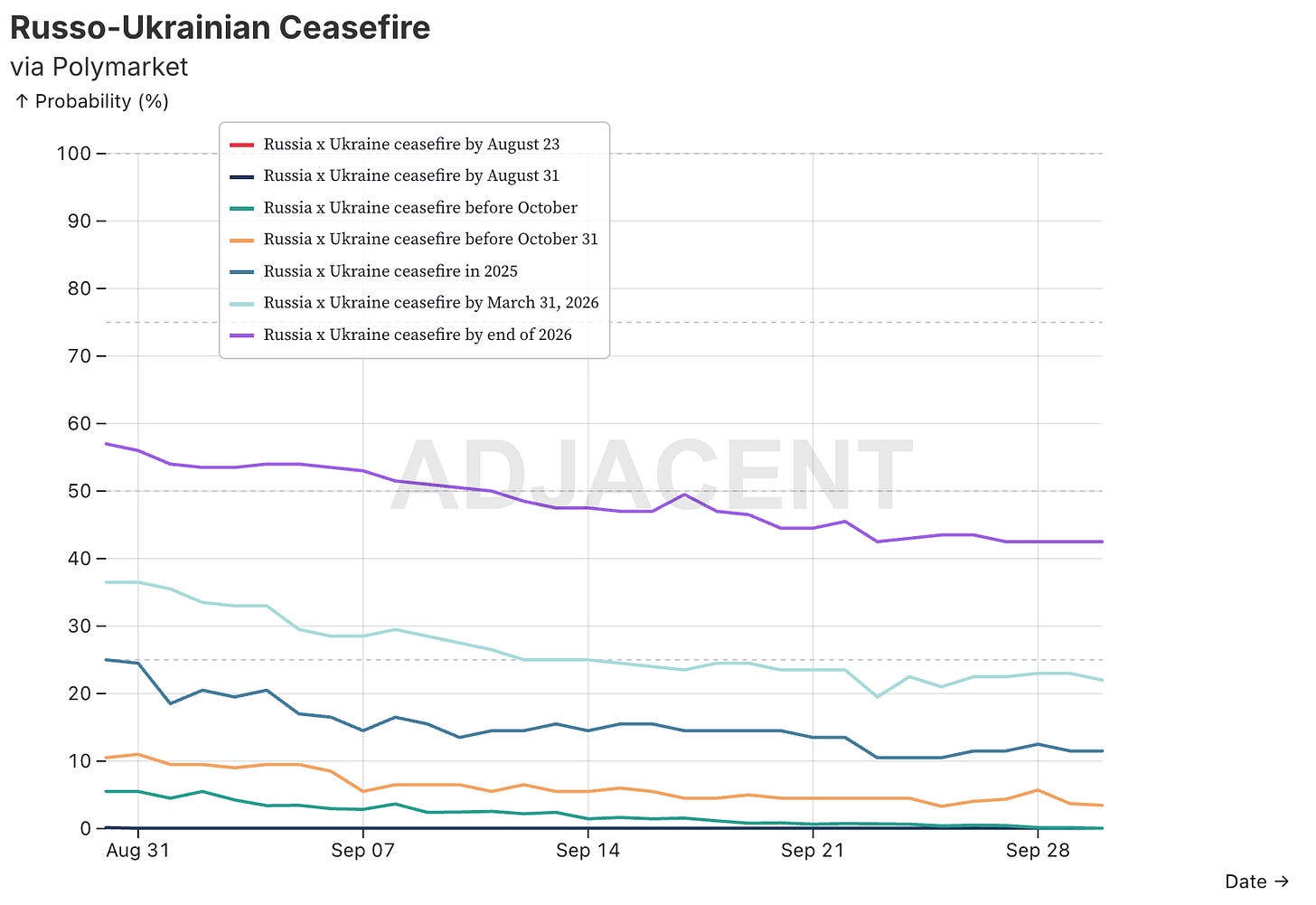
Wrap up
And that’s all for today. It’s quite a bold thesis, but I do believe it’s high time for either side to try and make a difference. The attrition narrative made everyone complacent. And that’s usually the moment in which everything changes.
Yet, while my odds for increased incursions and provocations are high, the Suwałki Gap invasion odds remain at 40-55%, barely above a coinflip in the optimistic (or should I say pessimistic) scenario. It’s still a high risk move and Russia needs to receive appropriate signals regarding:
- NATO reactions.
- Trump’s approach to Baltics and Poland.
- Level of aid coming to Ukraine.
- Belarus talks with the US (something of a wildcard in the overall scenario, although I believe that similarly to the last time, the parties won’t be able to find common ground in the end).
Stay strong and see you soon!

